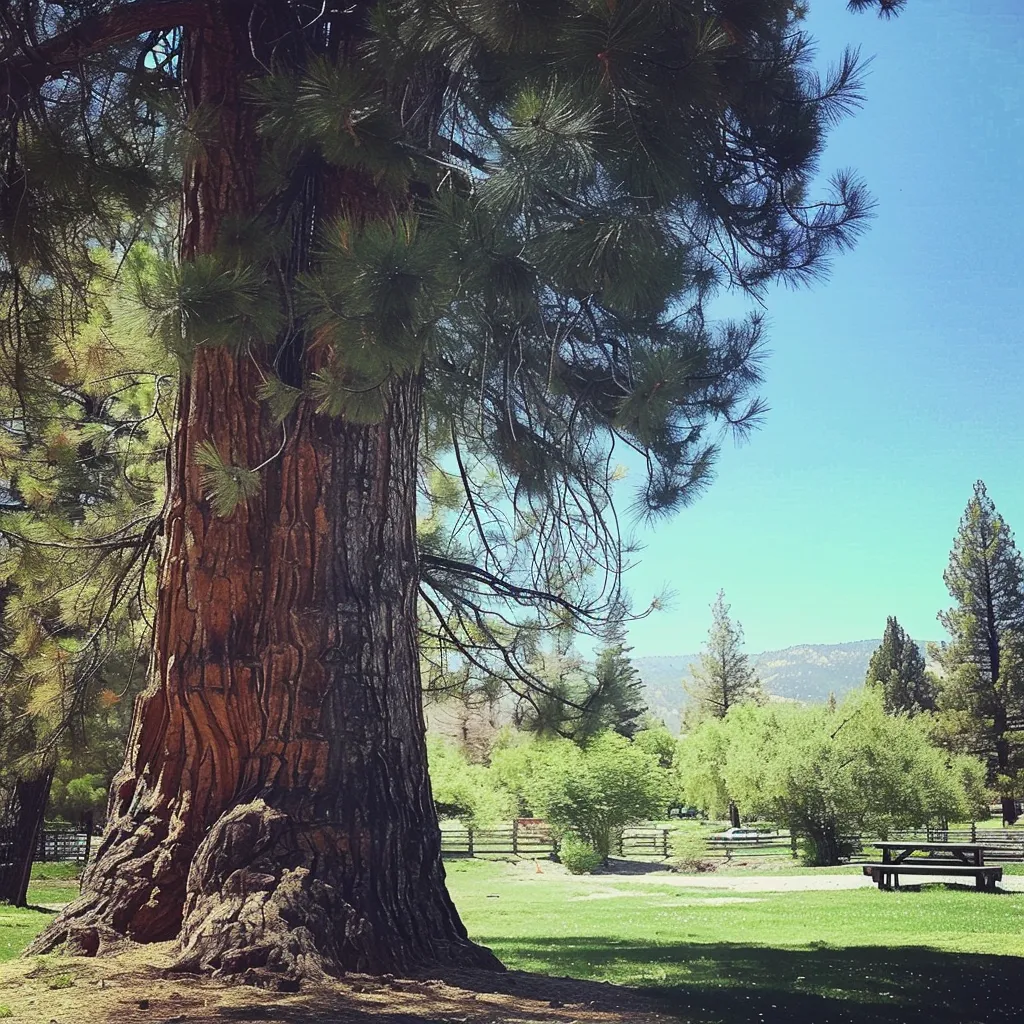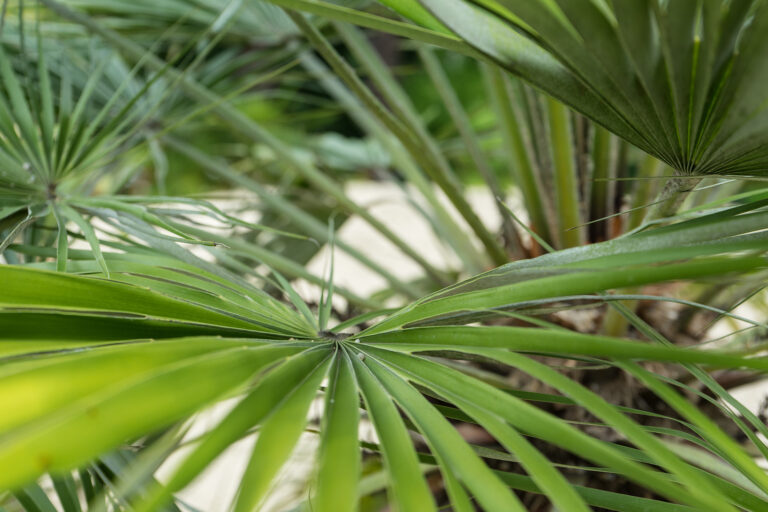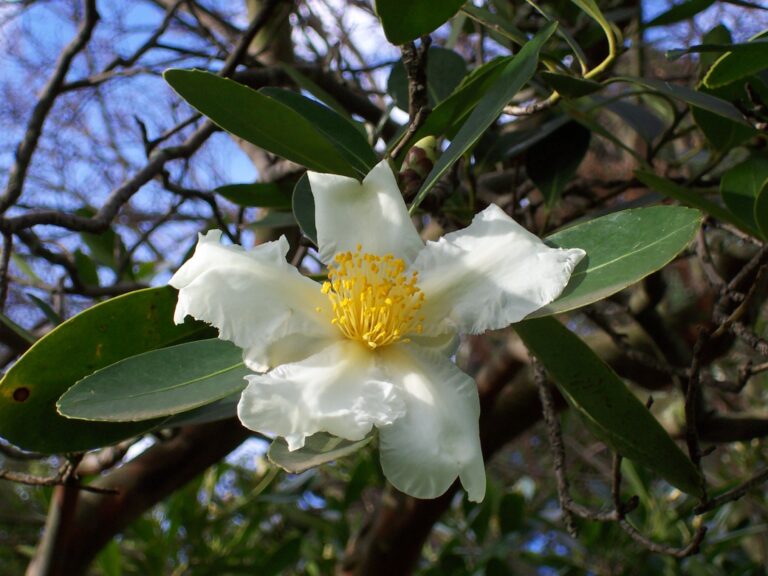How to Grow Sequoidendron – Giant Sequoia
Sequoiadendron giganteum, commonly known as the giant sequoia or Sierra redwood, is a stunning evergreen coniferous tree recognized for its impressive size, striking red-brown bark, and feathery blue-green needles. Native to the western slopes of California’s Sierra Nevada, the giant sequoia can live for thousands of years and achieve massive heights, often reaching over 300 feet in its natural habitat. Although it generally won’t reach such towering heights outside of its native range, it still makes an imposing and majestic addition to the landscape.
Giant sequoias have a naturally pyramidal shape with densely packed, upward-curving branches that give them a graceful, structured appearance. Their bark is thick, fibrous, and a deep red-brown color, providing an attractive contrast to the cooler tones of the foliage. As a slow-growing but long-lived tree, it can add beauty and grandeur to large properties, parks, or open spaces.

How to Plant Sequoiadendron
Choosing the Right Location
Giant sequoias require a large, open space with full sun exposure to reach their potential. While they are somewhat adaptable, they need ample room for their expansive root systems, which are critical to supporting their significant height and mass. When selecting a planting site, ensure it’s at least 30–40 feet from buildings, structures, or other trees to avoid competition and interference with growth.
Soil Requirements
Sequoiadendrons are adaptable to a range of soil types, including loamy, sandy, and even clay soils, as long as they are well-draining. These trees prefer a slightly acidic to neutral pH (around 5.5 to 7) but can tolerate slightly alkaline soils. In their native habitats, giant sequoias grow in deep, moist, well-drained soils, which support their extensive root systems. Adding organic matter like compost to the planting area can improve soil structure and provide additional nutrients.
Planting Process
- Timing: Early spring or fall are ideal times for planting, as moderate temperatures reduce transplant shock and help establish roots.
- Digging the Hole: Dig a hole approximately twice as wide as the root ball and just as deep, allowing for easier root spread.
- Placement: Place the tree in the hole, ensuring the top of the root ball is level with or slightly above the surrounding soil.
- Backfilling and Watering: Backfill the hole with native soil and tamp it down gently. Water thoroughly to eliminate any air pockets, ensuring a good start for the roots.
Growing and Caring for Sequoiadendron
Watering
Young sequoias require consistent watering, particularly in their first few years, as they establish their roots. Water deeply every week during dry spells, ensuring moisture reaches deep into the soil. Mature sequoias are more drought-tolerant but still benefit from supplemental watering in prolonged droughts. However, avoid waterlogging the soil, as poor drainage can cause root rot.
Mulching
Mulching is highly beneficial for giant sequoias, especially in their early years. Apply a 2–3 inch layer of mulch around the base, extending out to the tree’s drip line. This helps retain soil moisture, regulate temperature, and suppress weeds, which can compete for nutrients. Keep mulch a few inches away from the trunk to prevent rot and allow for adequate airflow.
Fertilizing
Giant sequoias generally require minimal fertilization. For young trees, applying a balanced, slow-release fertilizer in early spring can support growth. Look for a fertilizer with a balanced N-P-K ratio, such as 10-10-10, to supply essential nutrients without encouraging excessive top growth. Mature trees rarely need fertilization if planted in rich soil, as they naturally acquire nutrients through their deep root systems.
Pruning
Pruning isn’t necessary for sequoiadendrons, as they naturally maintain an attractive shape. However, you can remove any dead, damaged, or diseased branches to promote airflow and reduce the risk of disease. Avoid heavy pruning, as this can disrupt the tree’s natural form and slow growth. For young trees, it’s a good idea to check for low branches that may interfere with surrounding structures or walkways.

Sequoidendron Common Challenges and Pests
While relatively low-maintenance, giant sequoias can encounter a few issues in non-native landscapes:
- Root Rot: Poorly drained soil can lead to root rot, a fungal disease that damages roots and may cause yellowing foliage. Ensure soil drains well to prevent this issue.
- Pests: Giant sequoias are resistant to most pests, but they can sometimes attract aphids or spider mites, especially in drought conditions. Regular watering and proper care generally keep these pests at bay.
- Drought: While established sequoias are somewhat drought-tolerant, young trees need consistent moisture to thrive. Ensure adequate watering, especially in hot or dry weather.
Using Sequoiadendron in the Landscape
As a Focal Point
The giant sequoia makes a breathtaking specimen tree, offering immediate impact and grandeur to large landscapes, parks, or estates. Plant it in a prominent location to allow its symmetrical shape and unique color to stand out. Its impressive size and bold presence make it an ideal choice for open areas where it can be fully appreciated.
Privacy and Windbreak
When spaced adequately, sequoias can serve as a living privacy screen or windbreak. Their dense foliage provides effective shielding from wind and noise, while their evergreen nature keeps them attractive year-round. Planting several in a line or grouping them in a large area creates a natural, low-maintenance barrier that can offer a sense of privacy without the need for fencing.
Complementary Planting
Giant sequoias pair well with low-growing shrubs, ground covers, and perennials, which help accentuate the tree’s height and contrasting color. Consider pairing them with plants that have different textures and colors, like lavender, heather, or ornamental grasses, to create visual interest. Shade-loving plants, such as ferns and hostas, can thrive beneath the canopy of older trees.
Creating a Naturalistic Landscape
In large spaces, sequoiadendrons can create a forest-like atmosphere, particularly when planted in clusters or alongside other evergreens like pines and spruces. This can give your landscape a naturalistic, woodland feel and attract birds and wildlife. Consider adding pathways or benches to encourage exploration and relaxation within your sequoia grove.
Limitations and Considerations
- Space: Due to their size, giant sequoias are best suited for large properties. In smaller landscapes, they may quickly outgrow their space, posing a risk to nearby structures.
- Climate: Giant sequoias thrive in cooler climates and may struggle in regions with high temperatures and humidity. While they tolerate some heat, extended exposure to extreme conditions can lead to stress.
- Time: As a slow-growing tree, it can take decades for a giant sequoia to reach its full height. However, this also makes it a wonderful legacy tree, providing future generations with a living monument.
Sequoidendron Environmental Benefits
Growing a giant sequoia contributes significantly to environmental sustainability. These trees absorb large amounts of carbon dioxide, helping to reduce greenhouse gases. Their dense canopies provide shade, lower surrounding temperatures, and serve as habitat for various wildlife. When incorporated thoughtfully into the landscape, giant sequoias not only add beauty and elegance but also support a healthier ecosystem.
Sequoidendron Summary
Sequoiadendron giganteum is a tree that inspires awe and respect. Whether you plant it as a focal point or part of a larger landscape design, it’s a tree that brings timeless beauty and impressive stature. With proper planting, care, and consideration for space, giant sequoias will reward you with vibrant growth, stunning seasonal color, and a deep sense of natural heritage.







